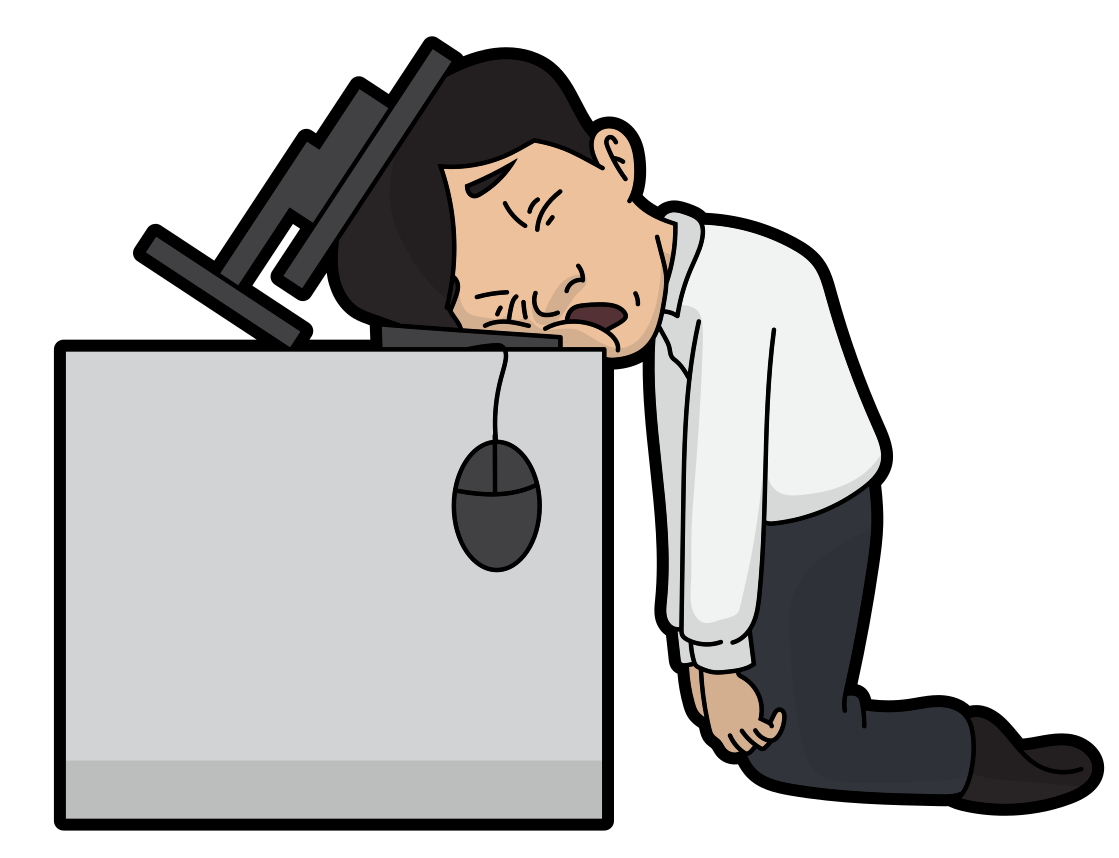 You’ve had a busy day at work. You check your watch; it’s almost 5pm. You should be packing soon – except, your boss is still in their office. You shouldn’t really be seen leaving before your boss, should you? You don’t want to be branded as ‘that guy’ – the one who is ‘not committed’, ‘not willing to go the extra mile’, ‘not flexible enough’, first out of the door’ – you don’t want to have that label pinned on your performance appraisal. After all, your boss is still hard at work, and so are your other colleagues.
You’ve had a busy day at work. You check your watch; it’s almost 5pm. You should be packing soon – except, your boss is still in their office. You shouldn’t really be seen leaving before your boss, should you? You don’t want to be branded as ‘that guy’ – the one who is ‘not committed’, ‘not willing to go the extra mile’, ‘not flexible enough’, first out of the door’ – you don’t want to have that label pinned on your performance appraisal. After all, your boss is still hard at work, and so are your other colleagues.
So you wait, pretending to work, although you do not really do much – perhaps you’re checking Facebook, reading the news or similar. And so does your boss, not wanting to be seen leaving before anyone else. But what example is this going to set for you and your other colleagues. You all wait for someone to make the first move – a prisoner’s dilemma situation. The only difference is that it’s you who is the prisoner in this situation.
Presenteeism
What we have described is an example of presenteeism. But how would we define it? If you search the term on Google Scholar or Scopus, you will come across a number of articles in the fields of health and labour economics that define presenteeism as a phenomenon in which employees who feel physically unwell choose to go to work, or stay on at work, rather than asking for time off to get better (see, for instance, Hansen and Andersen, 2008 and several others). This is also known as sickness presenteeism.
According to Cooper and Lu (2016), however, the use of the term can be extended to describe a wider situation in which a worker is physically present at their workplace but not functioning (by reason of tiredness, physical illness, mental ill-health, peer pressure or whatever else). As explained in Biron and Saksvik (2009):
Cooper’s conceptualisation of presenteeism implied that presenteeism was a behaviour determined by specific determinants (i.e. long working hours and a context of uncertainty). This tendency to stay at work longer than required to display a visible commitment is what Simpson (1998) calls ‘competitive presenteeism’ where people compete on who will stay in the office the longest.
The effect of presenteeism
 Unsurprisingly, the effect of presenteeism on the wellbeing of workers and the economic performance of firms has been looked at extensively from different angles and disciplines – including health economists, organisational behaviour and labour economists – for a recent and comprehensive review of the literature on this topic see Lohaus and Habermann (2019).
Unsurprisingly, the effect of presenteeism on the wellbeing of workers and the economic performance of firms has been looked at extensively from different angles and disciplines – including health economists, organisational behaviour and labour economists – for a recent and comprehensive review of the literature on this topic see Lohaus and Habermann (2019).
Most of these studies agree that the effects of presenteeism are negative; in particular, they identify significant negative effects on the physical health of workers (Skagen and Collins, 2016); emotional exhaustion and mental health issues (Demerouti et al, 2009); persistent productivity loss (Warren et al, 2011); lower work engagement and negative feelings (Asfaw et al, 2017) – among several others. There seems, therefore, to be plenty of convincing evidence that presenteeism is bad for everyone – business owners, managers and staff.
 So next time that you find yourself stuck at work working silly hours, feeling totally unproductive and just staying to be seen, email this blog to your boss and other colleagues – and ask them if they wish to join you for a drink or a walk.
So next time that you find yourself stuck at work working silly hours, feeling totally unproductive and just staying to be seen, email this blog to your boss and other colleagues – and ask them if they wish to join you for a drink or a walk.
You’re welcome!
(By the way, there’s a saying that in the UK the last one to leave the office is seen as the hardest working, whereas in Germany the last one to leave the office is seen as the least efficient!)
Articles
- The problem with presenteeism
- Presenteeism and Why You Should Care
- When so much at work has changed, why can’t we shake presenteeism?
- What is presenteeism? Counting the cost of presenteeism in the workplace
- Presenteeism at Work
- Turning the tide on presenteeism: how employers can combat the growing problem
 Do I really have to be here? The curse of workplace presenteeism
Do I really have to be here? The curse of workplace presenteeism- Working when sick is rising and harms you and your employer. This is why
- Majority of absence and presenteeism could be addressed by ‘targeted’ employer support
- How To Break The Chains Of Presenteeism
- Eradicating Presenteeism, Absenteeism, and Leavism in the Workplace
Personnel Today, Nerys Williams (5/12/13)
Linkedin, Jeffrey Smagacz (25/9/23)
BBC News, Josie Cox (24/7/23)
Enhesa, Lauren Payne (4/10/23)
Health Assured (20/1/20 – since updated)
The HR Director Magazine, David Bourne (22/5/19)
RTE, Kevin Murphy (29/5/19)
World Economic Forum Agenda, Douglas Broom (2/5/20)
Occupational health & wellbeing: Personnel Today, Ashleigh Webber (15/4/19)
Forbes, Jack Kelly (25/7/23)
SpiceWorks, Jonathan Munnery (7/6/23)
References
- Going ill to work–what personal circumstances, attitudes and work-related factors are associated with sickness presenteeism?
- Presenteeism as a global phenomenon
- Sickness presenteeism and attendance pressure factors: Implications for practice
- Presenteeism, Power and Organizational Change: Long Hours as a Career Barrier and the Impact on the Working Lives of Women Managers
- Presenteeism: A review and research directions
- The consequences of sickness presenteeism on health and wellbeing over time: A systematic review
- Present but sick: a three‐wave study on job demands, presenteeism and burnout
- Cost burden of the presenteeism health outcome: Diverse workforce of nurses and pharmacists
- Potential Economic Benefits of Paid Sick Leave in Reducing Absenteeism Related to the Spread of Influenza-Like Illness
Social science & medicine, Vol 67(6), pp.956–64, Claus D Hansen and Johan Hviid Andersen (June 2008)
Cross Cultural & Strategic Management, Vol 23(2) pp.216–31, Cary L Cooper and Luo Lu (April 2016)
International handbook of work and health psychology, Chapter 5, Caroline Biron and Per Øystein Saksvik (11/12/09)
British Journal of Management, Vol 9(1) pp.37–50, Ruth Simpson (September 1998)
Human Resource Management Review, Vol 29(1), pp.43–58, Daniela Lohaus and Wolfgang Habermann (March 2019)
Social Science & Medicine, Vol 161, pp.169–77, Kristian Skagen and Alison M.Collins (July 2016)
Career Development International, Vol 14(1), pp.50–68, Evangelia Demerouti, Pascale M Le Blanc, Arnold B Bakker, Wilmar B Schaufeli and Joop Hox (2009)
Journal of Occupational and Environmental Medicine, Vol 53(1), pp.90–9, Carol L Warren, Shelley White-Means, Mona Wicks, Cyril F Chang, Dick Gourley and Muriel Rice (January 2011)
Journal of occupational and environmental medicine Vol 59(9), pp.822–9, Abay Asfaw, Roger Rosa and Regina Pana-Cryan (September 2017)
Questions
- ‘Presenteeism leads to lower productivity and firm performance and should be discouraged by business owners and managers’. Discuss.
- Jack Ma, the Chinese billionaire and owner of Ali Baba, has defended his ‘996 work model’ (working 9am to 9pm for 6 days a week) as a ‘huge blessing’. Find and review some articles on this topic, and use them to write a response. Your response should be substantiated using relevant economic theory and empirical research.
- Have you or anyone you know found yourself guilty of presenteeism? Share your experience with the rest of the class, focusing on effects on productivity and your attitude towards your employer and work colleagues.